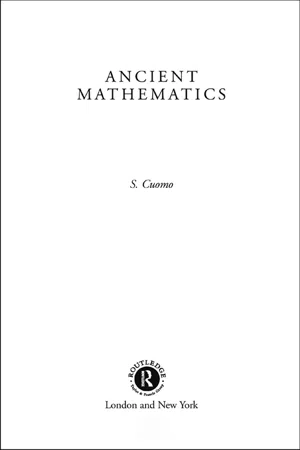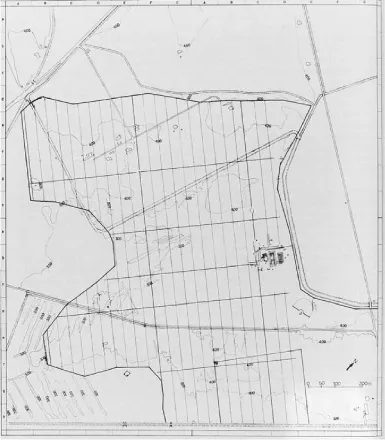1 EARLY GREEK MATHEMATICS: THE EVIDENCE
There is nothing in all the state that is exempt from audit, investigation, and examination.1
Our story officially begins in the Greek-speaking world around the late sixth–fifth century BC, during a period also known as the Classical Age of Greece. Most of what we know about mathematics from this period comes from Athens. The most powerful and among the richest Greek states at the time, Athens was also the cultural centre for art, rhetoric, philosophy. Consequently, it attracted people, including mathematicians, from all over the Mediterranean. Moreover, Athens was a democracy, in that its citizen body (comprising only free native adult males), over a period of time and through various upheavals, including periods of tyranny, had gained right to political representation. There was a general public assembly; many public offices were in principle open to any citizen; the law was administered to a significant extent by jury courts, filled by lot from the assembly. The citizen body also manned the army and navy.
Athenian public life, conducted in spaces such as the theatre, the marketplace, the courts, was particularly lively. The Athenians, both rich and poor, landowners and cobblers, come across in our literary sources as particularly fond of debate and discussion about the most various topics: politics, justice, beauty. It has been argued that such a context affected intellectual life in general, and mathematics in particular:
in the law-courts and assemblies many Greek citizens gained extensive first-hand experience in the actual practice of argument and persuasion, in the evaluation of evidence, and in the application of the notions of justification and accountability.2
Whereas the mathematics we find earlier in Egypt or Mesopotamia consisted of specific exercises with verification of the result but no justification of the method employed, Greek mathematics introduced the quest for general propositions which could be proved in such a way as to be objectively persuasive. In other words, where the Egyptians had been able to calculate the volume of a certain cylinder and verify that the result was correct, or at least suitable for their, usually practical, purposes, the Greeks found the general formula for the volume of any cylinder and proved why that formula was right. The public life and political circumstances of Athens and other contemporary Greek states have been seen as a fundamental factor in creating this difference.
Although the context for the emergence of early Greek mathematics has been well described, its details remain fairly obscure, because no strictly mathematical text has survived from the fifth or fourth century BC. I say ‘strictly’ mathematical because we do have a good number of texts which have a lot to say about mathematics, written by people like Plato or Aristotle, who can be more properly called philosophers. They were less interested in providing an accurate depiction of contemporary mathematicians and mathematics than they were in making philosophical points – what they say cannot be taken as ‘neutral’ information. Also, both Plato and Aristotle had very strong views about mathematics and its value as a form of knowledge, and we do not know to what extent those views were shared by other people, even from their same social and economic background. Other evidence about our topic is found in historians such as Herodotus, playwrights such as Aristophanes, orators such as Lysias, who were not particularly interested or versed in mathematics, but used it as an example, or for simple operations such as counting ships in a naval battle. Herodotus, Aristophanes, Lysias can be taken as representative of the educated common person, who was probably numerate but not an expert in mathematics, and, although like Plato and Aristotle they had their own agenda, major mathematical or philosophical tenets do not seem to have figured on it.
Hundreds of public documents which have survived from this period are also evidence for the use of mathematics in official contexts such as compiling inventories, recording tribute or accounting for the expense of building a temple. Finally, we have some archaeological material, for instance traces of geometrical town planning or objects which can be identified as counting-boards or abaci (from the Greek abax, ‘tablet’).
I have already remarked on the problems linked to the nature of the evidence in the introduction, but let me repeat myself here. The sources I have collected in this chapter are fragmentary, scattered over time and place, or so concentrated in one place (Athens) as to make any generalization dangerous. They are biased, unclear and silent on many points (mathematics in education, for instance) on which one would love to know more. In fact, chapter 2 will be partly devoted to an analysis of later testimonies about early Greek mathematics, and we will see that most of what we know (or we think we know, or we thought we knew) comes in fact from authors who in some cases write many centuries after the event. Readers will see for themselves how the work of the historian approaches the fluky clues-gathering and educated-guessing of the detective.
Material evidence
To begin with, a little exception to our division of evidence by type. I quote the earliest Greek story on the origins of geometry. According to Herodotus, the Egyptian king Sesostris
divided the country among all the Egyptians by giving each an equal square parcel of land, and made this his source of revenue, appointing the payment of a yearly tax. And any man who was robbed by the river of a part of his land would come to Sesostris and declare what had befallen him; then the king would send men to look into it and measure the space by which the land was diminished, so that thereafter it should pay in proportion to the tax originally imposed. From this, to my thinking, the Greeks learnt the art of measuring land (geometria).3
In the use Sesostris made of it, geometry was both part of the procedure of exacting taxes and a guarantee to his people that the assessment of the amount of tax to be exacted was fair. This story encapsulates the strict connections between mathematics and practical tasks, between mathematics and the political sphere, and between mathematics and persuasion; connections which we find again in early Greek instances of geometry in the literal sense.
From as early as the eleventh century BC, a combination of land hunger, social unrest and sense of opportunity prompted several Greek communities to branch out in the Mediterranean, founding new cities or colonies, among them Miletus in Turkey, Cyrene in North Africa, Massilia (Marseille) in France. The colonists aspired not just to a change in location, but to a new life, ideally with improved status and economic circumstances. The land newly ‘acquired’ – the presence of indigenous people was variously negotiated – was often to be equally divided between the settlers, ignoring any distinctions there may have been among them in the mother community. For instance, we learn from one of the foundation accounts of Cyrene (a colony of Thera) that
[the Therans] are to sail on equal and similar terms, by family, one son to be chosen † those in their prime and free men from the rest of the Therans † to sail. If the settlers establish a settlement, any of their relatives who later sails to Libya is to receive citizenship and rights and a share of undistributed land.4
Archaeological surveys of the sites of several Greek colonies (Metapontum, Chersonenos in the Black Sea, Massilia, perhaps Pharos in Croatia) have revealed land-division grids which follow regular geometrical patterns (see Figure 1.1).
Figure 1.1 Plan of Metapontum and surrounding area (reproduced with permission from Atti dell’Accademia Nazionale dei Lincei, Notizie degli scavi di antichitá, Supplement to 1975, 8th series, 29 (1980), fig. 10 p. 32)
It is very difficult to date this kind of evidence, but at least in some cases the grids seem to be contemporary with the foundation of the city. This suggests an orderly land distribution, where equality of share was guaranteed by the equality of the geometrical figures (usually rectangles), in its turn dependent on the accuracy of the relevant measurements.5
Better attested still is urban geometrical land division. Many ancient cities, mostly from the fifth and fourth century BC, although there are earlier examples, exhibit an orthogonal plan – Greek foundations, such as Rhodes, Agrigentum, Paestum; Etruscan ones such as Marzabotto and Capua, and, in the fourth and especially third century BC, Roman colonies such as Alba Fucentia (near Rome) and Cosa. All these cities have straight streets cutting each other at right angles, and urban blocks shaped like rectangles or squares, sometimes all of the same size. Sometimes two or more streets seem to have been designated as ‘main’ streets, in that they meet in the middle of the city area or are recognizably larger than the ‘side’ streets.
As well as having concrete advantages (e.g. facility of orientation), orthogonal city planning was imbued with social and political meanings: in a geometrically laid-out city, unlike a casually-conglomerated one, everything had a proper place. Spatial order suggested orderings of other kinds. Mathematics thus served both as a tool for solving practical tasks, and as a carrier of meanings, a combination confirmed by Aristotle’s discussion on how best to organise and arrange a city. He mentioned Hippodamus of Miletus,
the same who invented the art of planning cities, and who also laid out the Piraeus [...] The city of Hippodamus was composed of 10,000 citizens divided into three parts – one of artisans, one of husbandmen, and a third of armed defenders of the state. He also divided the land into three parts, one sacred, one public, the third private [...] The arrangement of private houses is considered to be more agreeable and generally more convenient if the streets are regularly laid out after the modern fashion which Hippodamus introduced.6
Apart from the port of Athens (the Piraeus), later ancient sources credit Hippodamus with having planned Rhodes and Thurii in Southern Italy (founded in 443 BC). His provisions for an ideal city went from geometrical land division to social and economic tripartitions, all probably informed by a general notion of order and regularity.
Hippodamus may be taken as an early specimen of ‘applied’ Greek mathematician, together with others whose memory has come down to us in connection with their buildings or other achievements. The names of architects like Kallikrates or Philo have been preserved in inscriptions which link them to the Parthenon and to the Arsenal in Athens, respectively.7 We can get an idea of the possible mathematical content of the activities of those men by looking at some features of ancient Greek architecture. It has been argued that Greek temples, from as early as 540 BC (date of the temple of Apollo at Corinth) were built so that their width was the mean proportional between their length and height. Many fifth-century works, such as the Parthenon in Athens (c. 447–420 BC), incorporated refinements ‘to correct optical illusions which would make a truly regular temple look irregular’.8 For instance, the axes of the columns incline inwards; the platform on which the temple stands is not perfectly horizontal but curved; the corner columns are slightly thicker than the others. It is thought that these refinement...

